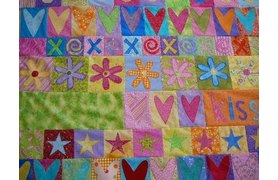How to Design Paper Dolls
Though you don't see as many paper dolls around these days, Dover Publications' lines are a notable exception; you might be surprised that this is one of those things that falls into the "everything old is new again" category. For any project that has an iconic character at the helm, a paper doll is a great promotional item and is less expensive to produce than 3-dimensional figures. It's also just plain fun and great to experiment with. Here are ways to work with paper dolls.
Instructions
-
How to Design the Doll
-
1
Decide on the pose your doll will hold by choosing one facing forward with legs slightly apart and something dynamic going on with at least one of the arms. It's not necessary to have the doll standing with arms out at shoulder level--that's a bit extreme--but having a hand in a position that could be holding something gives you more freedom later on when designing clothing and accessories.
-
2

Draw the basic doll shape lightly in pencil in the center of a sheet of paper. Dress the doll in some sort of foundational clothing such as underwear or a bathing suit, something close to the skin that will not interfere with the clothing you'll design later. Make sure to leave flat space at the shoulders and an indentation at waist level for the clothing tabs. Go over these lines in ink and then color them in with markers or colored pencils.
-
- 3
- 4
-
5
Scan the doll at a high resolution, 300 dpi or higher, and do any editing required. Resize the sheet as a whole to keep the stand in proportion (if you feel the need to resize it at all).
How to Design the Wardrobe
- 6
- 7
-
8
Add tabs at the shoulders and/or the waist to anchor the outfit in place. Mark any accessories such as hats or carried items with dashes to indicate where slits need to be cut.
- 9
-
10
Scan your garment pages and do any cleanup you want. You can rearrange the pieces for maximum paper usage, but resist the urge to resize them or you risk them not fitting your doll.
-
11
Print out test copies of your garments, cut them out and try them on your doll before releasing the designs to the public.
-
1
Tips & Warnings
It's best to scan both your black-and-white and color versions in case you change your mind or make a mistake.
Write instructions in the open spaces for those not used to paper dolls.
Do not resize your doll image after you start designing the clothes; keeping everything in proportion will be next to impossible.
Resources
- Photo Credit Jennifer Walker
Comments
-
 MariM
Jan 14, 2009
This will be great for my neice. Thanks
MariM
Jan 14, 2009
This will be great for my neice. Thanks -
 MariM
Jan 14, 2009
This will be great for my neice. Thanks
MariM
Jan 14, 2009
This will be great for my neice. Thanks -
 missnice104
Jul 15, 2008
Loved it loved it loved it! I use to play with so many paper dolls when I was little. I draw a lot too, so this was right up my alley! Thanks! Really a good article!!
missnice104
Jul 15, 2008
Loved it loved it loved it! I use to play with so many paper dolls when I was little. I draw a lot too, so this was right up my alley! Thanks! Really a good article!! -
 missnice104
Jul 15, 2008
Loved it loved it loved it! I use to play with so many paper dolls when I was little. I draw a lot too, so this was right up my alley! Thanks! Really a good article!!
missnice104
Jul 15, 2008
Loved it loved it loved it! I use to play with so many paper dolls when I was little. I draw a lot too, so this was right up my alley! Thanks! Really a good article!!


























